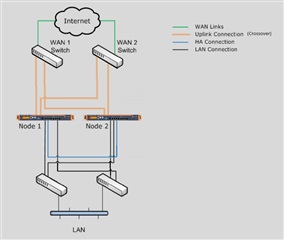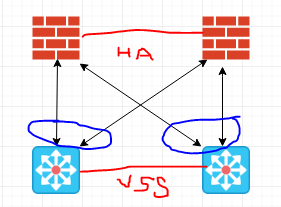Hello,
I'm configuring 2 x UTM 430 devices in HA as an Active-Active, the HA is configured to monitor a 2 port LAG (LACP) to our Core switch.
Our Core switch is in a bonded configuration VSS (ie, there are two disparate devices that are managed and appear as a single switch), our aim with the Sophos HA is to be able to weather the loss of one of the utm without too much downtime.
What I'm unsure about, is whether all 4 ports on the core switch end should be configured in the same lag group, or should the primary and secondary UTM ports be configured to separate lag groups?
Current Configuration:
Master > Port 17 > LAG (FW_TO_CORE) > Core Switch 1 Port 10ge.1.1 (LAG.0.1)
Master > Port 18 > LAG (FW_TO_CORE) > Core Switch 1 Port 10ge.1.2 (LAG.0.1)
Slave > Port 17 > LAG (FW_TO_CORE) > Core Switch 2 Port 10ge.2.1 (LAG.0.2)
Slave > Port 18 > LAG (FW_TO_CORE) > Core Switch 2 Port 10ge.2.2 (LAG.0.2)
We have done the current configuration above and the results are:
One port on each of the Core Switch has 1 port suspended and all of the other ports are open and up. We need to make the 4 ports running and up to utilize UTMs link redundancy.
My question is that should it be 4 lag ports on 1 lag group or any other workaround for it to work properly?
Thanks in advance.
Christian
This thread was automatically locked due to age.



